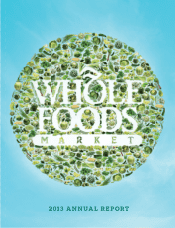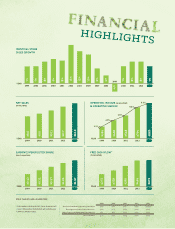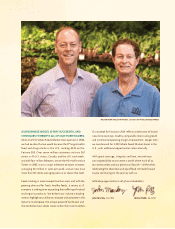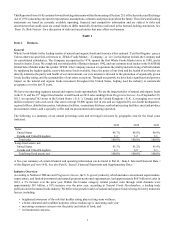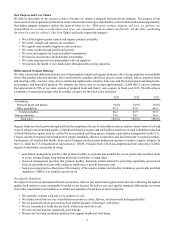Whole Foods 2013 Annual Report Download - page 10
Download and view the complete annual report
Please find page 10 of the 2013 Whole Foods annual report below. You can navigate through the pages in the report by either clicking on the pages listed below, or by using the keyword search tool below to find specific information within the annual report.
1
This Report on Form 10-K contains forward-looking statements within the meaning of Section 21E of the Securities and Exchange
Act of 1934 concerning our current expectations, assumptions, estimates and projections about the future. These forward-looking
statements are based on currently available operating, financial and competitive information and are subject to risks and
uncertainties that could cause our actual results to differ materially from those indicated in the forward-looking statements. See
“Item 1A. Risk Factors” for a discussion of risks and uncertainties that may affect our business.
PART I
Item 1. Business.
General
Whole Foods Market is the leading retailer of natural and organic foods and America’s first national “Certified Organic” grocer.
Unless otherwise specified, references to “Whole Foods Market,” “Company,” or “we” in this Report include the Company and
its consolidated subsidiaries. The Company incorporated in 1978, opened the first Whole Foods Market store in 1980, and is
based in Austin, Texas. We completed our initial public offering in January 1992, and our common stock trades on the NASDAQ
Global Select Market under the symbol “WFM.” Our Company mission is to promote the vitality and well-being of all individuals
by supplying the highest quality, most wholesome foods available. Since the purity of our food and the health of our bodies are
directly related to the purity and health of our environment, our core mission is devoted to the promotion of organically grown
foods, healthy eating, and the sustainability of our entire ecosystem. Through our growth, we have had a significant and positive
impact on the natural and organic foods movement throughout the United States, helping lead the industry to nationwide
acceptance over the last 35 years.
We have one operating segment, natural and organic foods supermarkets. We are the largest retailer of natural and organic foods
in the U.S. and the 12th largest food retailer overall based on 2012 sales rankings from Progressive Grocer. As of September 29,
2013, we operated 362 stores in the United States (“U.S.”), Canada, and the United Kingdom (“U.K.”), averaging over seven
million customer visits each week. Our stores average 38,000 square feet in size and are supported by our Austin headquarters,
regional offices, distribution centers, bakehouse facilities, commissary kitchens, seafood-processing facilities, meat and produce
procurement centers, and a specialty coffee and tea procurement and roasting operation.
The following is a summary of our annual percentage sales and net long-lived assets by geographic area for the fiscal years
indicated:
2013 2012 2011
Sales:
United States 96.7% 96.8% 96.9%
Canada and United Kingdom 3.3 3.2 3.1
Total sales 100.0% 100.0% 100.0%
Long-lived assets, net:
United States 95.7% 95.2% 95.9%
Canada and United Kingdom 4.3 4.8 4.1
Total long-lived assets, net 100.0% 100.0% 100.0%
A five-year summary of certain financial and operating information can be found in Part II, “Item 6. Selected Financial Data,”
of this Report on Form 10-K. See also Part II, “Item 8. Financial Statements and Supplementary Data.”
Industry Overview
According to Nielsen’s TDLinx and Progressive Grocer, the U.S. grocery industry, which includes conventional supermarkets,
supercenters, and limited-assortment and natural/gourmet-positioned supermarkets, had approximately $603 billion in sales in
2012, a 3% increase over the prior year. Within this broader category, natural product sales through retail channels were
approximately $81 billion, a 10% increase over the prior year, according to Natural Foods Merchandiser, a leading trade
publication for the natural foods industry. We believe the growth in sales of natural and organic foods is being driven by numerous
factors, including:
• heightened awareness of the role that healthy eating plays in long-term wellness;
• a better-educated and wealthier populace whose median age is increasing each year;
• increasing consumer concern over the purity and safety of food; and
• environmental concerns.
•
•
•
•
•
•
•
•
•
•
•
•
•
•
•
•
•

